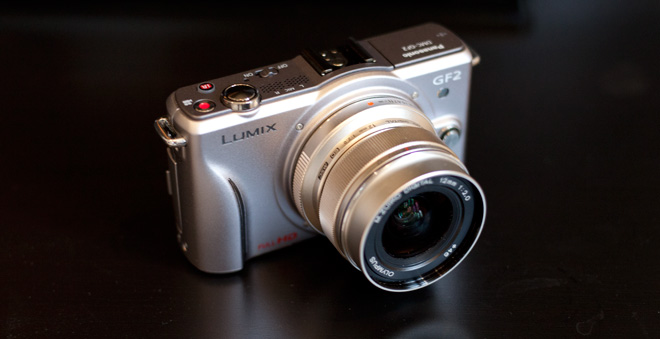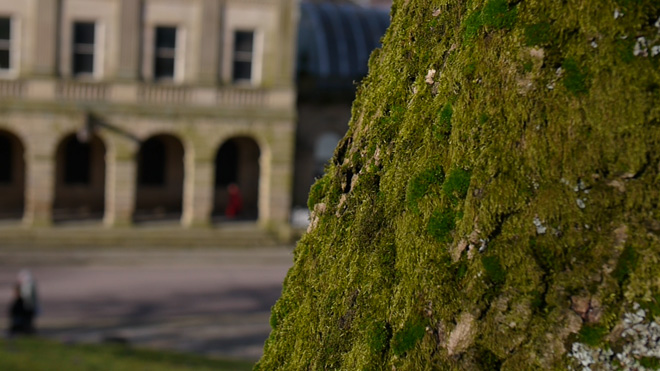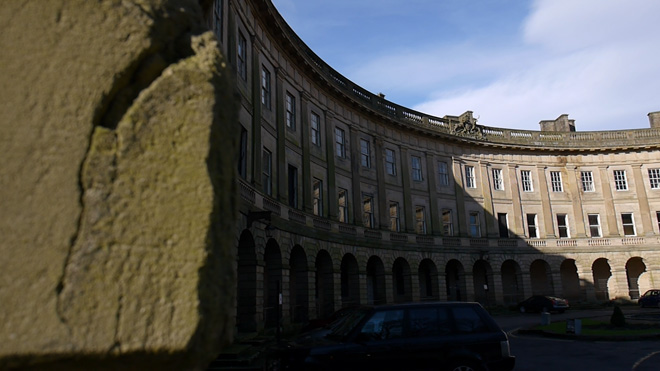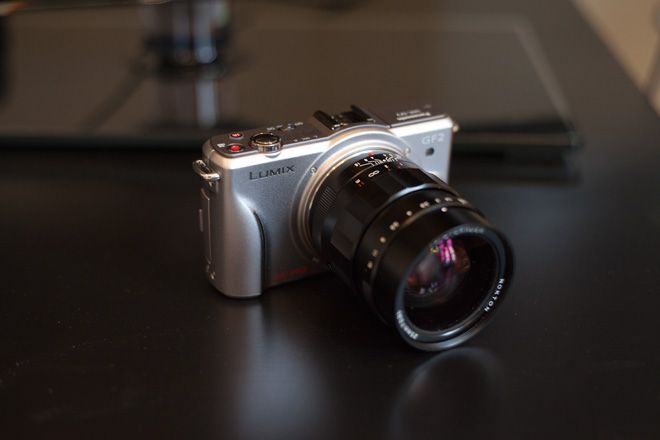
The Panasonic GF2 may be a small camera but the hack is big news. Now GH2 shooters can get a 2nd body for next to nothing and have a b-cam that shoots at the same bitrate and same format, with the same lens mount and the same sized sensor.
Say for example your narrative drama shoot requires 3 rigs, your car chase requires you to intercut between multiple angles, or your live event requires 6 simultaneous recording vantage points. Having multiple cameras is the answer, to avoid having to stage the same sequences multiple times. This saves a lot of expense and time.
The cost of doing a multi-rig shoot with Scarlets or C300s would be extremely high, even if renting. But one GH2 and multiple small GF2s is a bargain solution for indie filmmakers.
The cost of a C300 is $16,000. Times by 3 and that is $48,000. 3x FS100s would set you back $15,000. The cost of a GH2 body and two hacked GF2s is $1500. That is some incredible value.
Yesterday I shot my first GF2 footage. I’m impressed with the image for the price. No it isn’t as good as the GH2 but with a tweaked version of my Vanilla GH2 patch the camera is doing 1080/25p at 44Mbit AVCHD no problem. Very reliable. I’ve also increased the number of i-frames from 1 every 6 frames instead of every 12, which gives you a look closer to ALL-I or AVC-Intra. (I’ve not yet been able to get 100% AVCHD Intra working on the GF2 but the difference in image quality is minimal).
Frame grab from the hacked GF2 footage at 1080/24p 44Mbit:

The GF2 is not as good as the GH2 in terms of resolution or high ISO performance, the sensor is slightly smaller at 2x crop compared to 1.86x and there’s no mic socket – but this thing is $300. I repeat. $300.
I would use the GF2 on a car rig, where I wouldn’t want to risk my main camera, or where I had a team of people covering a live event each with their own camera, or where a small discrete camera would be needed, like something placed on stage – inside the drum kit!?
Although the GF2 doesn’t have 24p it is PAL / NTSC switchable with the hack so you can have 1080/25p for a film-like look as well as 1080/30p. Now that 25p is perfect for European shooters and gives an identical look to 24p in terms of cinema aesthetics for US shooters. To avoid flickering lights you can shoot at 1/60 with the GF2’s Flicker Reduction override.
The GF2 has a image profile called CINE, but otherwise it doesn’t have the same film modes as the GH2. No Smooth or Nostalgic. Well – it does have a version of Nostalgic but it is too extreme, yellow and misty to be of much use. You can however still adjust contrast, sharpness, noise reduction and saturation on a sliding scale for the 1 standard image profile on the GF2.

A big difference to the GH2 is that officially the GF2 lacks full manual control in video mode. However in practice you can gain a lot of it back with a few tricks…
1. Set the shutter to 1/50 or 1/60 in the menus under Flicker Reduction – this is optimal and prevents the camera from adjusting the shutter speed automatically in video mode.
2. Use a lens with a manual aperture ring, that the camera cannot control electronically
With those two locked, the camera will still override your ISO setting and adjust that automatically. But it does so intelligently. Think about how you’d do it manually – as a last resort when 1/50 and F1.4 isn’t bright enough for the available light. Of more concern is the way the GF2 will adjust exposure by itself in the middle of a shot. However when it gets to ISO 100 and the shutter can’t go lower than 1/50, it does lock exposure.
The AE/AF lock button is overridden when recording starts so is of no use.
Exposure compensation works but only when Flicker Reduction is disabled and the camera can adjust the shutter speed (which is unfortunate, otherwise it would be like having an ISO control if it operated only on ISO). Exposure compensation works on both shutter speed and ISO depending on shooting conditions. Exposure compensation does not work during a recording, you have to adjust it before you hit record. If you stop down the aperture of a manual lens during recording, the camera will choose a lower shutter speed and in some cases a higher ISO to maintain the exposure, which is not ideal.
On a Micro Four Thirds lens, the aperture is automatically controlled in video mode. With Flicker Reduction set to 1/50 it will stop down the lens in bright light. Otherwise it will increase the shutter speed and try to shoot wide open. It is quite an intelligent auto-mode.

Recording format
Panasonic says that the GF2 does 1080/50i/60i but it is actually progressive segmented frame (PsF) format. This is basically a progressive 25p stream delivered inside an interlaced wrapper. Most NLEs will recognise it as 25p not 50i so you don’t have to worry about de-interlacing workflows. If you do have issues simply use ClipWrap 2 to get rid of the AVCHD wrapper.
MJPEG mode is native 30p like on the GH2. With the patched resolution at 1920×1080 detail is close to what you get in 1080p AVCHD.
Remarks on image quality
Real resolution in 1080p on the GF2 is somewhere between 720p and 1080p, whilst on the GH2 it is more like real 1080p.
Though the image processing chip and encoder is basically very similar (probably a slower processor on the GF2), the main difference is that the GH2 has an all-digital output from the sensor and does a more intelligent scaling from 18MP to 1080p on the sensor itself – because it runs faster. This results in far more detail.
The GH2 also has gapless micro lenses on the NMOS whilst the GF2 doesn’t and it has an older sensor, so the GF2 is pretty noisy at anything above ISO 800.
There’s some moire on the GF2 – it is not as bad as most but worse than the GH2 which hardly has any.
I’m using 44Mbit AVCHD 1080/25p on the GF2 and it gives similar resolution and bitrates to the 5D Mark II – you can definitely intercut despite the smaller crop sensor. Though the sensor is very dated compared to more current cameras, the image processor does a good job in video mode.
So all in all a very impressive performance given the price!
Footage coming soon


